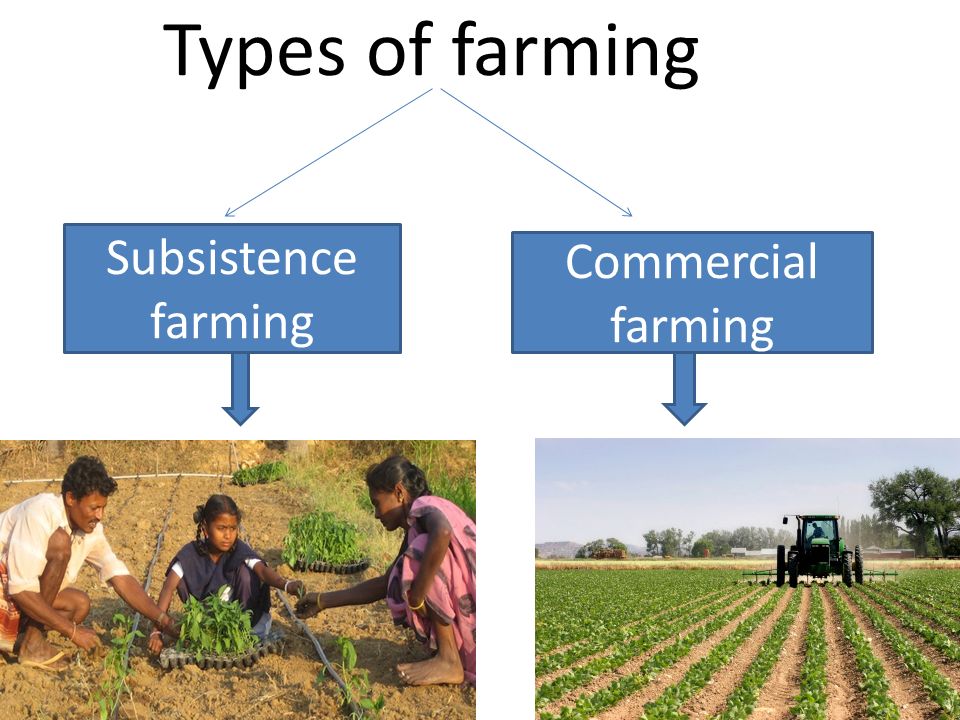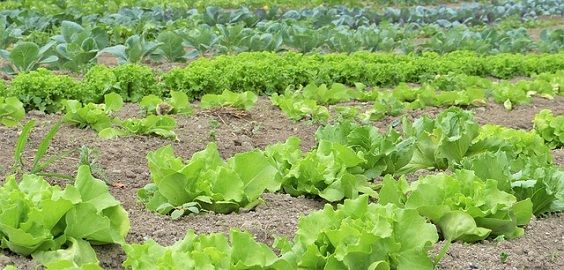A Comprehensive Guide to Commercial Farming vs Subsistence Farming Practices
A Comprehensive Guide to Commercial Farming vs Subsistence Farming Practices
Blog Article
Recognizing the Impact of Organic Farming on Environmental Health
The exploration of natural farming's impact on environmental health provides an engaging story of eco-friendly balance and sustainability. By prioritizing all-natural procedures over artificial treatments, chemical-free farming techniques offer an appealing remedy to several of the most pressing ecological obstacles. The potential for enhanced soil fertility and decreased pollution are just the start of the more comprehensive implications for biodiversity and environment strength. However, the real degree of these advantages and their long-lasting stability remain topics of continuous research study and dispute. What lies beneath the surface of these practices might redefine our understanding of lasting agriculture.
Enhancing Dirt Fertility
Enhancing dirt fertility is a cornerstone of natural farming, as it directly influences crop return and ecological sustainability. Organic practices focus on the all-natural enrichment of dirt health and wellness, primarily via making use of raw material such as compost, green manure, and cover crops. These methods enhance soil structure, water retention, and nutrient availability, cultivating a prospering environment of microorganisms and useful insects that add to dirt wellness.
Organic farming eschews artificial fertilizers, deciding rather for natural changes that advertise well balanced nutrient cycling. This approach not only renews necessary nutrients like potassium, nitrogen, and phosphorus however likewise boosts the dirt's capability to sequester carbon, minimizing environment change impacts. The combination of plant rotation and polyculture techniques further adds to soil fertility by avoiding vitamins and mineral depletion and reducing pest stress.
Additionally, the focus on keeping living roots year-round via cover cropping helps minimize dirt erosion and promote biodiversity. This organic variety is vital for sustainable agriculture, as it sustains strength against bugs and conditions. In summary, natural farming's focus on enhancing dirt fertility not only boosts efficiency but likewise aligns with broader ecological goals, ensuring lasting agricultural practicality and ecological balance.
Decreasing Pollution
Mitigating air pollution is an essential facet of organic farming, which highlights sustainable agricultural methods that minimize environmental influence. By eschewing artificial fertilizers and pesticides, natural farming substantially minimizes the leaching of unsafe chemicals into soil and water supply. This technique not just safeguards marine environments however additionally makes sure the purity of groundwater, a crucial resource for animal and human intake. Organic farming's reliance on all-natural fertilizers, such as garden compost and green manure, additional boosts dirt wellness without introducing toxins.
In addition, organic farming methods add to air quality improvement. The lack of synthetic inputs lowers the discharge of volatile organic compounds, which are frequently linked with traditional farming methods. Furthermore, chemical-free farming often entails crop turning and cover cropping, methods that improve carbon sequestration and decrease greenhouse gas exhausts. This adds to a reduction in the total carbon impact of agricultural activities.
Additionally, natural certification requirements apply stringent standards on waste monitoring, guaranteeing that farming residues are managed in an eco liable manner. These steps jointly lessen the air pollution concern on the atmosphere, promoting a cleaner, much healthier ecosystem. Thus, natural farming plays an essential role in suppressing pollution and fostering sustainable agricultural landscapes.
Supporting Biodiversity
Invariably, chemical-free farming plays a critical duty in advertising biodiversity by cultivating a diverse community within agricultural landscapes. This practice embraces natural processes, avoiding synthetic chemicals and genetically modified organisms, which can interfere with neighborhood vegetation and fauna. By using crop rotation, polyculture, and the upkeep of all-natural environments, chemical-free you could check here farming supports a variety of species, from dirt microbes to pollinators and killers that naturally regulate pest populaces.
Among the crucial elements of natural farming that boosts biodiversity is the focus on improving and keeping dirt health. Healthy and balanced soils offer as environments for a multitude of organisms, adding to nutrient biking and ecological community durability. The evasion of synthetic chemicals and plant foods reduces unsafe drainage, shielding nearby environments and water bodies from contamination, which frequently causes a richer biodiversity in bordering areas.
Furthermore, natural farms commonly include barrier areas, hedgerows, and cover crops, which provide additional environments and food sources for wild animals. These functions create hallways for animal activity and increase hereditary variety within populations. By promoting eco-friendly equilibrium and resilience, natural farming aids sustain different life types, inevitably adding to the security and performance of agricultural systems and the more comprehensive setting.
Conserving Water Resources
By stressing soil wellness, natural farming enhances the soil's capability to maintain wetness, therefore minimizing the demand for too much irrigation. Techniques such as crop turning, cover chopping, and the use of natural issue improve the soil structure, enhancing its water retention capacity.
Additionally, chemical-free farming decreases water air pollution by removing artificial plant foods and pesticides, which are common contaminants in conventional farming. The dependence on all-natural insect control methods and natural inputs minimizes the overflow of harmful substances right into water bodies, protecting aquatic ecosystems and keeping the top quality of water sources. This method helps secure biodiversity in waterways and sustains the health and wellness of neighborhoods reliant on these water sources.
In addition, organic farmers often apply rainwater harvesting systems and utilize drip irrigation techniques that effectively deliver water straight to plant roots, better enhancing water usage. These strategies jointly add to the lasting management of water sources, guaranteeing their availability for future generations while supporting agricultural efficiency.

Boosting Carbon Sequestration
Enhancing carbon sequestration is just one of the crucial advantages of natural farming methods, which play a crucial duty in mitigating climate adjustment. By promoting much healthier soil communities, chemical-free farming boosts the soil's capacity to store and record co2 from the environment. This is attained through the application of garden compost, cover cropping, and decreased tillage, which add to boosted raw material in the soil. As natural matter decays, it develops secure carbon compounds that stay sequestered in the dirt for extended durations.

In addition, chemical-free farming lowers dependence on artificial plant foods, which are related to greenhouse gas exhausts throughout their production and application. By fostering a closed nutrient cycle, organic systems minimize emissions while recording even more carbon in the dirt. Organic farming represents a sustainable technique to attending to worldwide climate obstacles.
Conclusion
The influence of organic farming on environmental health and wellness is extensive, as it improves basics soil fertility, reduces pollution, and advertises you could try here biodiversity. By prioritizing sustainable techniques and natural amendments, organic farming decreases chemical drainage, protecting aquatic ecosystems. Strategies such as crop rotation and cover chopping contribute to carbon sequestration and water conservation, cultivating durable farming systems. This alternative strategy sustains the well-being of the setting, highlighting the crucial role of natural farming in advancing sustainable agricultural techniques (commercial farming vs subsistence farming).
Enhancing dirt fertility is a cornerstone of natural farming, as it straight influences crop yield and ecological sustainability. Organic practices prioritize the all-natural enrichment of dirt health, mostly through the use of natural matter such as compost, environment-friendly manure, and cover crops. By eschewing artificial plant foods and pesticides, organic farming dramatically reduces the leaching of dangerous chemicals right into soil and water systems. By highlighting dirt health, organic farming enhances the soil's ability to preserve dampness, thus decreasing the demand for too much watering. By advertising much healthier dirt communities, natural farming boosts the dirt's capacity to store and catch carbon dioxide from the ambience.
Report this page